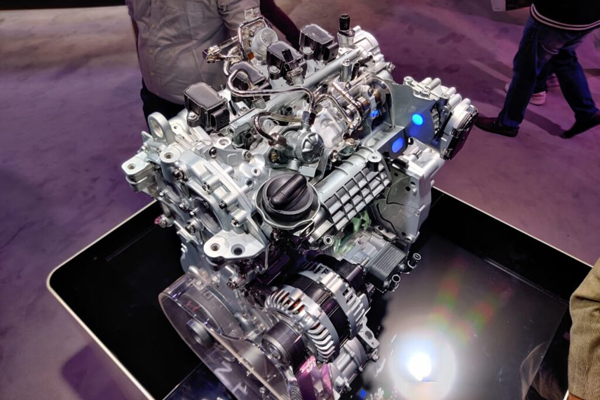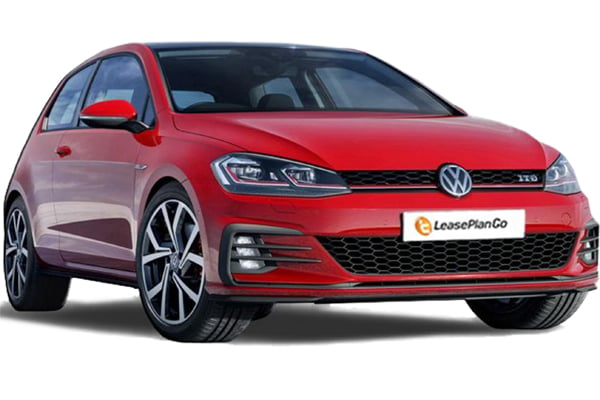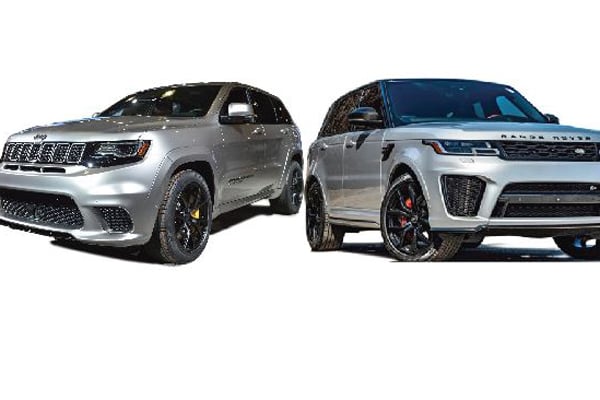Why car manufacturers are downsizing engines

What you need to know:
- Other advances include the way the fuel is introduced into the engine, with powerful computers and software controlling fuel injection to the millisecond and allowing the engine to shut down in traffic where stop and start is fitted.
According to different car dealers and enthusiasts, car manufactures are downsizing car engines not only to save fuel but to also cut on pollution or carbon footprint emission into the atmosphere, while getting the same or even more power.
Andrew Kananura lived in Europe for approximately 10 years before returning to Uganda. While there, he says it was mandatory for different cars to undergo periodic smoke checks. For instance, the Ministry of Transport in cities such as London carries out smoke checks on cars that are three years old. Once your car does not meet certain standards of emitting fumes into the atmosphere, you are taxed heavily.
Some companies such as Volkswagen (VW) were forced to pay fines for bypassing carbon emissions after some of their cars gave false readings during service mode.
In Europe, cars such as the VW Touareg, the Audi Q7, the Range Rover Sport and the Range Rover Vogue all run on 3000cc engines. In 2012, companies such as Toyota stopped selling the Toyota Land Cruiser VX, locally known as mpenkoni, in Britain after realising that big engines were discouraged in Europe and were heavily taxed in terms of road licence, road fund and tolls, among other areas.
The context
What most car manufacturers are doing is coming up with smaller engines, while putting on single scroll ceramic double or twin turbos to give the car power. For these cars to remain competitive or even get better than those that run on, for example a 5700cc or 4500cc engines, in terms of performance, the one with a 3000cc engine is given a primary and secondary twin turbo. For instance, the new Toyota Land Cruiser LC 300 2022 model runs on a 3500cc petrol engine and a 3300cc twin turbo diesel engine.
“These car engines are downsizing to half and getting the same or even better performance, better gas mileage, better carbon footprint and this has allowed motorists to look at cars as their first choice. The big engines such as the 5700cc petrol of the Lexus LX 570 and the 4500cc of the Land Cruisers found themselves outclassed. An average family found that having a Land Cruiser was not economically viable. These cars were thirsty because they burnt a lot of fuel and manufacturers had no choice but to downsize. Be it Land Rovers, those still running on 5000cc litre engines are uncommon and many motorists are buying those with 3000cc engines instead,” Kananura explains.
Technology advancement
Gilbert Wavamunno, the managing director of Spear Motors Limited, says engine downsising by car manufacturers is due to advancement of technology overtime.
“There were cars that run on 5500cc engines but were downsised to 4000cc or even lower because of the turbo chargers and direct injections in engines that save fuel and give you the same engine power. It cuts across all car manufacturers, regardless of the model you produce,” Wavamunno explains.
For instance, the Toyota Hilux at some point run on 3500cc and 3200cc engines but this was downsised to 2800cc and 2400cc in some countries. This is because cars with big engines give little gas mileage, while their engines are costly to build, on top of being expensive.
According to The New York Times, car manufacturers such as Volvo, a Swedish brand, announced that it will no longer produce engine combustion cars by 2030; that all cars will be fully electric.
“They (car manufacturers) are revolutionising the car industry. With time, the best you will find on the market are hybrid cars. There are those that are fully charged such as the Nissan Leaf and Tesla and those that are electric and use a less fuel. When you drive above certain speeds, they switch from engine to electric mode, until a time when there will be no car that uses fuel at all,” Kananura explains.
Hybrid and electric technology
Kananura says one of the biggest push or pull factors for the car industry is that different manufacturers have realised the market is dying, starting from the feet. This, he argues, means they cannot be competitive if they do not adjust to the latest technology trends.
“The most lucrative car today is an electric car. It is why different manufacturers are now competing to produce the longest single charge sale that any car could have. Mercedes Benz recently run a 1,000km single charge car. Most of the running hybrid cars run between 200-300miles and few will reach 500 miles. Imagine driving from Kampala to Kabale District in western Uganda, without stopping to charge. The challenge has been the bulky batteries that have been revised,” Kananura adds.
In future, no matter how long it takes to catch up with Uganda and Africa as a whole, combustion engines will be no more.
What makes electric cars faster is because they have no engine blocks seated at the front that normally weigh approximately 200 kilogrammes, which puts the weight to power ratio into context.
They are run by mortars with no gearbox, double differentials and radiators, among many other components.
All you have is a battery and a mortar in each wheel, making the car lighter, faster and giving you better mileage with no expenditure on fuel.
How does it work?
Engine designers are finding better ways to extract more power from smaller amounts of fuel. An internal combustion engine works by igniting fuel and using the following explosion to push the piston up and create a driving force. To ignite, fuel needs to be mixed with oxygen, so downsized engines work best if there is plenty of it. The best way to achieve this is to use a turbocharger, which forces much more oxygen into the engine cylinder, resulting in a bigger and more efficient bang.
The turbo is essentially an enclosed fan, which uses exhaust gas from the engine to spin and create its boost and pressurise the engine. This used to result in a power lag (where its benefits were not felt until higher revs were reached), but smaller and clever variable geometry turbochargers which get going more quickly, have dramatically reduced this effect.
Other advances include the way the fuel is introduced into the engine, with powerful computers and software controlling fuel injection to the millisecond and allowing the engine to shut down in traffic where stop and start is fitted.




